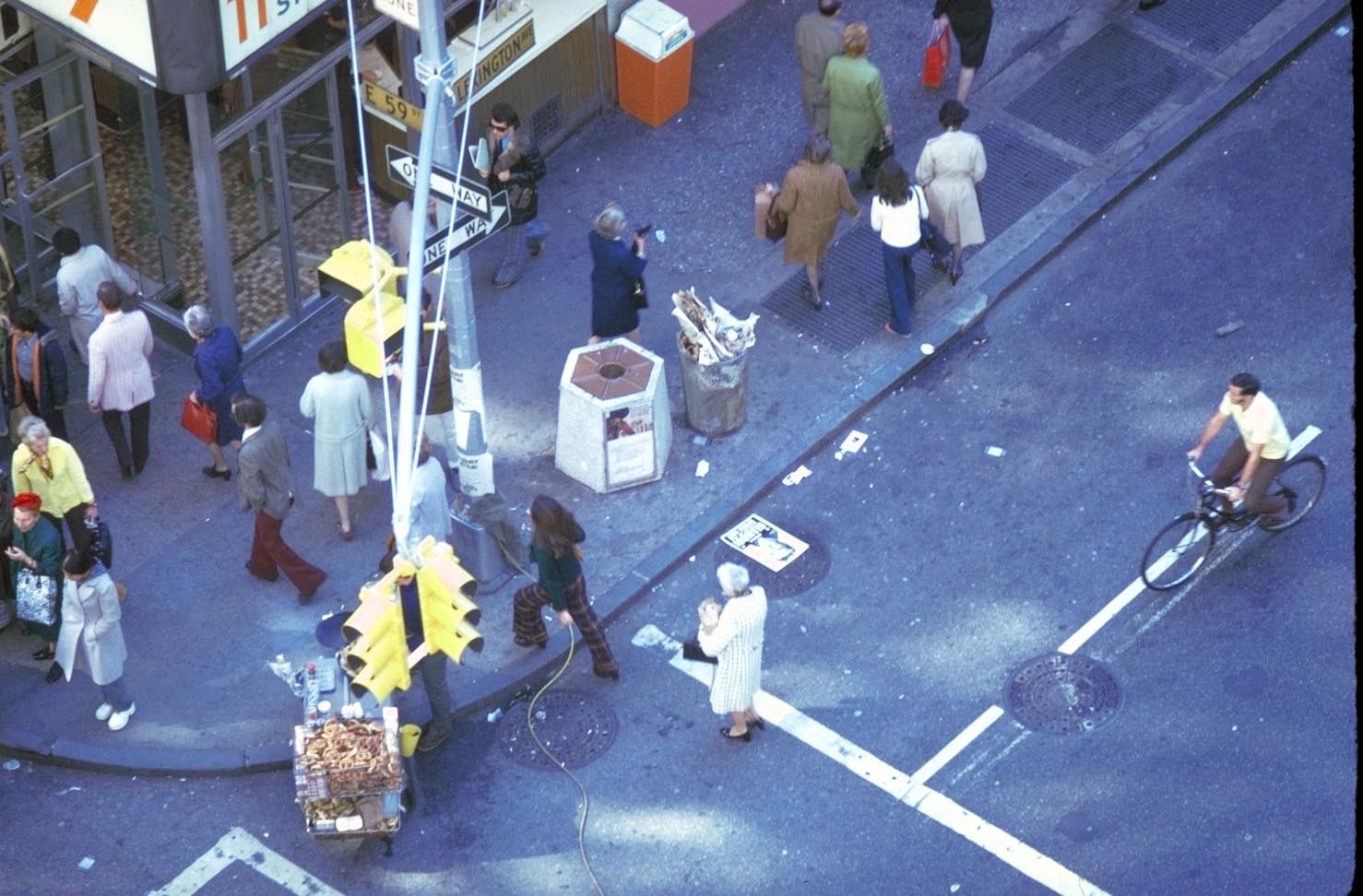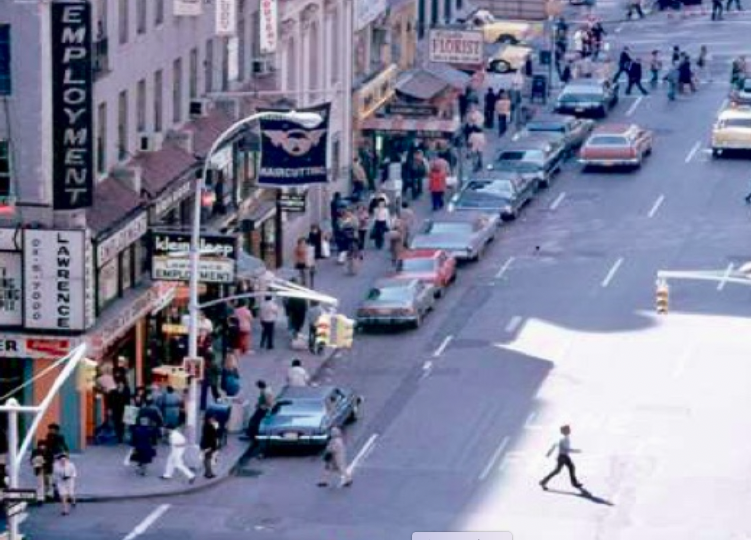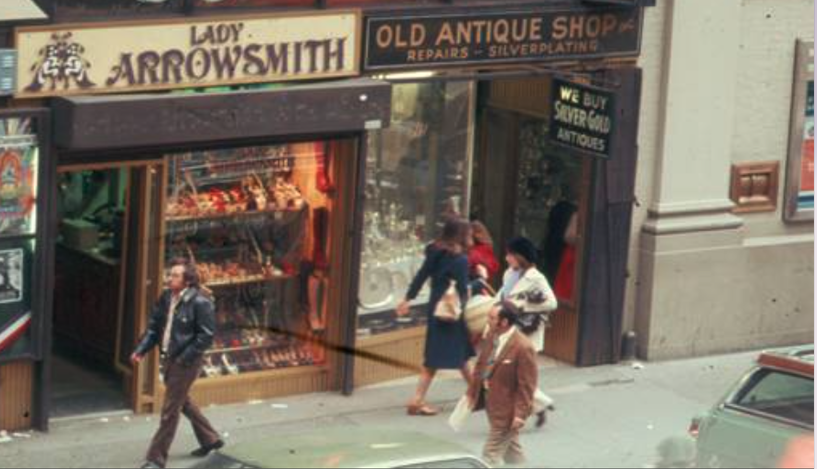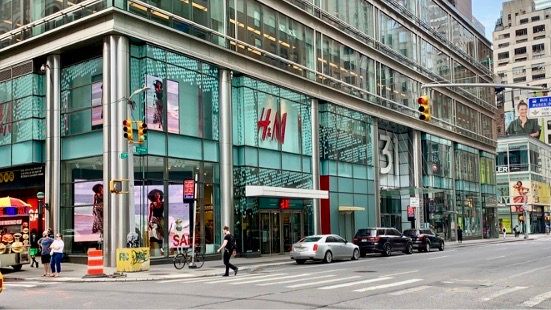Notes (August 2nd, 2023): These are some notes from the Holly Whyte study that could maybe be used in a future article so I've marked them with R for resource. -TP
Groundbreaking Research. It's a far different place than when we studied two blocks on Lexington Avenue as part of Holly Whyte’s Street Life Project in the 1970s. This research about how a lively street functions was groundbreaking for the time, giving us as a baseline to look at how much Midtown has fundamentally changed over 50 years.
More Background
What else did we learn from our study of Lexington Avenue and 59th Street?

- We observed the activity around a single wastebasket during the course of a day. We saw how the waste basket served as a desk for one person who laid a briefcase across the top. He was almost immediately accosted by a woman who came from across the street, yelling at the man, “It is a wastebasket.” Because of the wastebasket’s design with an 8-inch hole on the top, we noticed one well-dressed man stuffing his newspaper in the round throat of the basket, leaving it sticking out. Shortly after, another man came along, pulled it out, looked at it, and put it back in. Then a third well-dressed man, without skipping a beat, pulled it out and went on.
- We noticed how the position of the waste basket next to the lamp pole provided a place to get a break from the heavy, fast-paced pedestrian flow.
- We studied a corner food store on 59th and Lexington with a takeout window right on the street, which narrowed the sidewalk enough to slow traffic and give passers-by a chance to see what was available to eat. This generated business throughout the day.
- We discovered how a small convenience store merchant leased the sidewalk in front of a very narrow store to a vendor who sold wigs on a rack. The display of wigs slowed down pedestrians long enough that some decided to pop into his store.
- We analyzed how a bank with a 25-foot blank wall facing the street harms the stores immediately next to it. The owner of a store immediately next door told us that when people walked by the bank, they automatically sped up, and it took two or three storefronts for them to get back into a window-shopping pace. He had wisely canted his store window so potential customers would find it easier to see what he was offering.
- We learned about pickpocketing along these two blocks by accompanying NYPD detectives to understand the specific places where pickpocketing occurred. One place was at the revolving doors into Bloomingdales, where a pickpocket would enter the door with another person, picking their pocket. The other where pairs would operate together, especially crossing the street…one would accidentally bump into a candidate while the other with a newspaper wrapped around his hand to hide while picking a person's pocket or purse.




